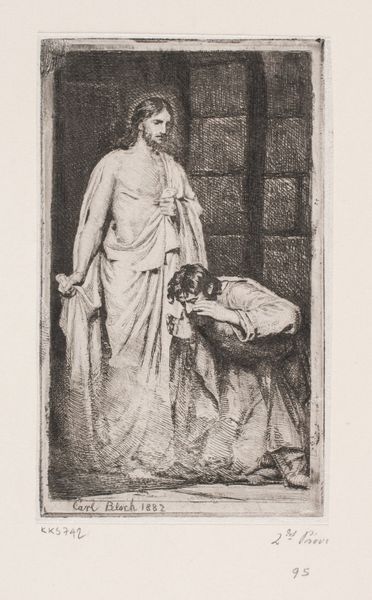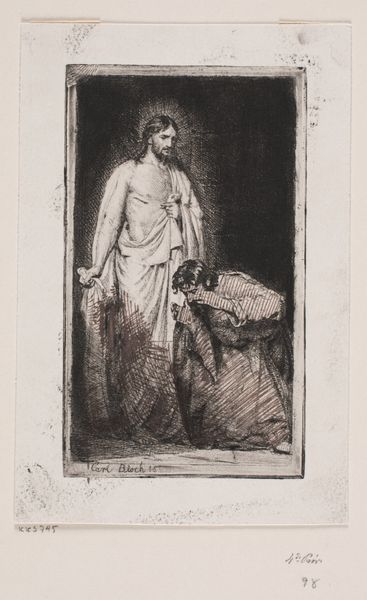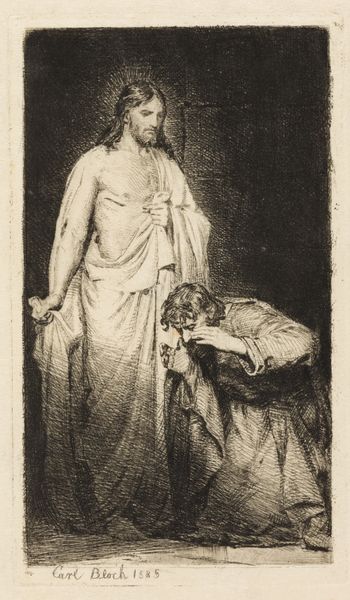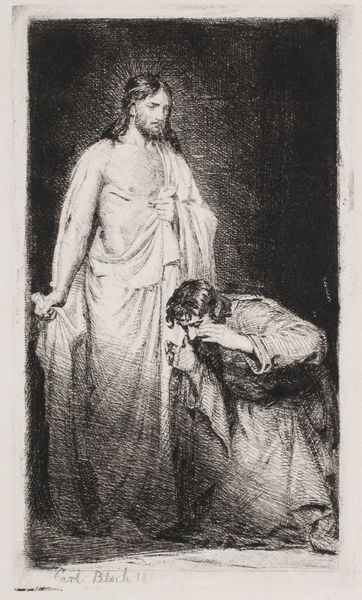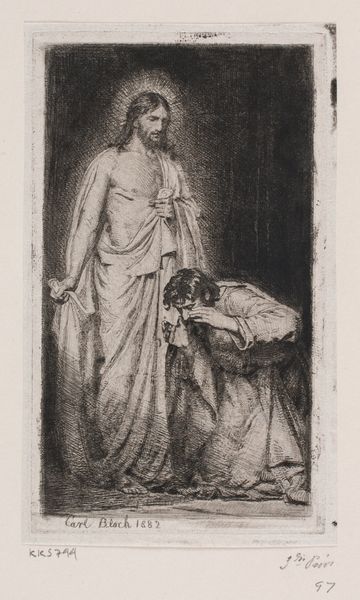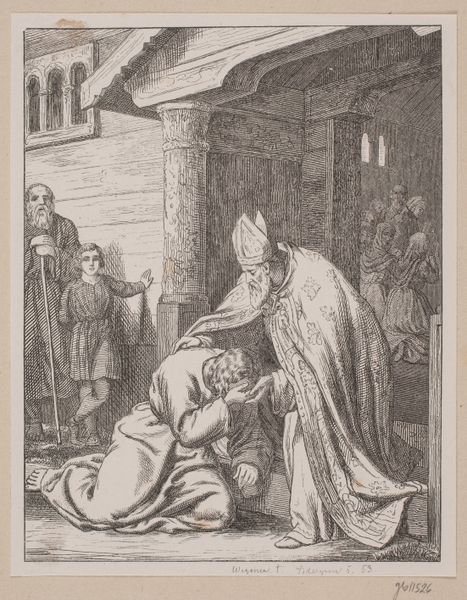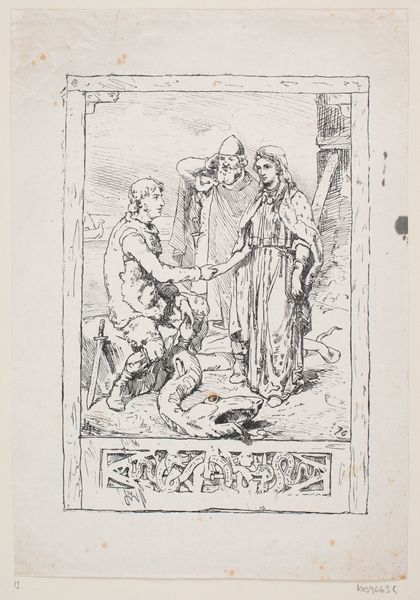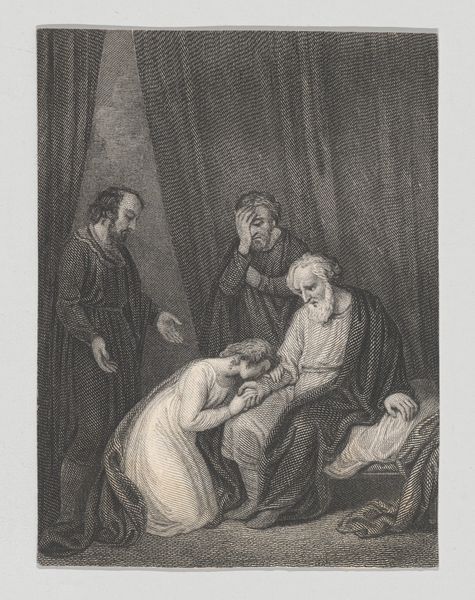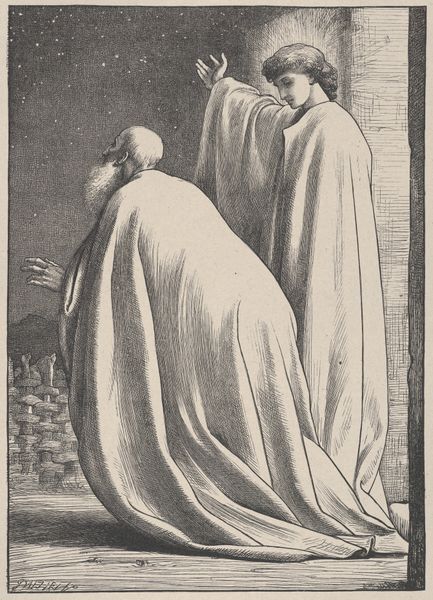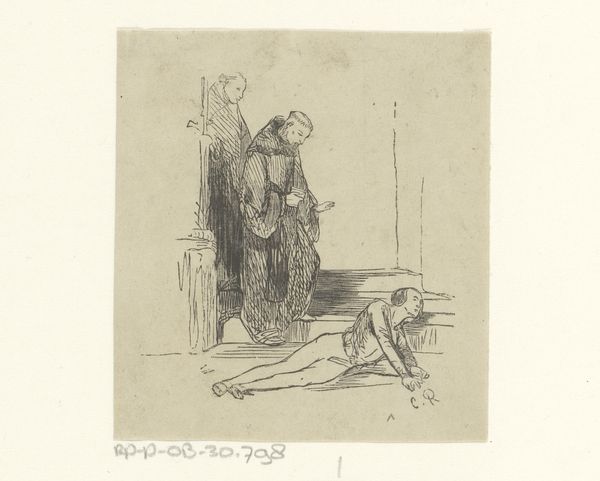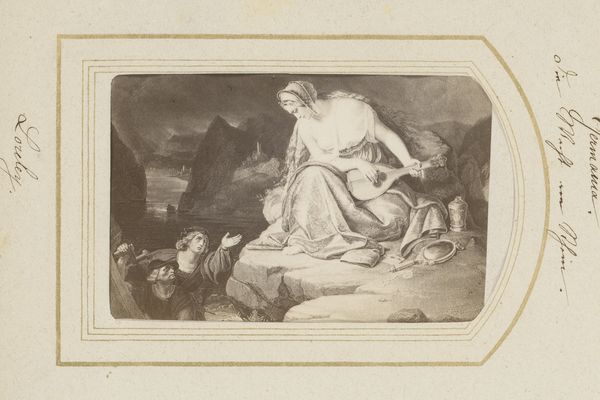
drawing, print, etching, intaglio, paper
#
drawing
#
narrative-art
# print
#
etching
#
intaglio
#
paper
#
academic-art
Dimensions: 119 mm (height) x 69 mm (width) (plademaal)
Curator: This is Carl Bloch’s etching, "Christ and the Doubting Thomas," created in 1882. Editor: The composition is quite stark, limited tonal range, yet intensely emotional. It almost feels theatrical with that dark, implied backdrop, and very intimate scale. Curator: Bloch was a Danish painter known for his religious scenes, often commissioned for chapels and churches. He very consciously built his reputation on rendering biblical narrative for his time. The tale of Doubting Thomas is an old one, deeply embedded in western art and Christian symbolism. Editor: Notice the precise, almost scientific rendering of light and shadow. There's an inherent tension between the implied depth and flatness created by all of the small marks in the cross-hatching. Also, that diagonal pull—Thomas is on his knees, head bowed, pulled downward and right, against Christ standing, vertical. Curator: Yes, and that positioning visually manifests Thomas's shift in psychological space, from disbelief to acceptance. His touching of Christ's wounds—it’s such a powerful representation of faith overcoming doubt through tangible experience. The act references the symbolic importance of touch within a cultural and spiritual history of divine experiences. Editor: True, yet despite that narrative heft, the work resides mainly in how he builds visual weight with line. The fine networks create a tangible presence—a density that, ironically, evokes a strong sense of absence, the mystery behind what can't be seen. Curator: In essence, this is Bloch navigating faith, not as a fixed truth, but as something to be personally encountered and perhaps, questioned. He asks the viewer to reflect on their own moment of epiphany. Editor: Well, the stark simplicity of the lines and its relatively small scale are deceptively powerful, revealing an artist fully in command of tone and composition. I am fascinated by how the academic style reinforces such immediacy. Curator: For me, the emotional honesty of this print comes from Bloch using this moment as a cultural signifier of uncertainty in modern faith. It makes this almost two-hundred-year-old rendering perpetually modern.
Comments
No comments
Be the first to comment and join the conversation on the ultimate creative platform.
